Volume 4, Issue 2
Displaying 1-17 of 17 articles from this issue
- |<
- <
- 1
- >
- >|
-
Article type: Cover
2001Volume 4Issue 2 Pages Cover1-
Published: September 25, 2001
Released on J-STAGE: October 27, 2017
Download PDF (2303K) -
Article type: Appendix
2001Volume 4Issue 2 Pages App1-
Published: September 25, 2001
Released on J-STAGE: October 27, 2017
Download PDF (17K) -
Article type: Index
2001Volume 4Issue 2 Pages Toc1-
Published: September 25, 2001
Released on J-STAGE: October 27, 2017
Download PDF (114K) -
Article type: Article
2001Volume 4Issue 2 Pages 77-82
Published: September 25, 2001
Released on J-STAGE: October 27, 2017
Download PDF (804K) -
Article type: Article
2001Volume 4Issue 2 Pages 83-88
Published: September 25, 2001
Released on J-STAGE: October 27, 2017
Download PDF (751K) -
Article type: Article
2001Volume 4Issue 2 Pages 89-92
Published: September 25, 2001
Released on J-STAGE: October 27, 2017
Download PDF (529K) -
Article type: Article
2001Volume 4Issue 2 Pages 93-96
Published: September 25, 2001
Released on J-STAGE: October 27, 2017
Download PDF (667K) -
Article type: Article
2001Volume 4Issue 2 Pages 97-100
Published: September 25, 2001
Released on J-STAGE: October 27, 2017
Download PDF (576K) -
Article type: Article
2001Volume 4Issue 2 Pages 101-109
Published: September 25, 2001
Released on J-STAGE: October 27, 2017
Download PDF (1063K) -
Article type: Article
2001Volume 4Issue 2 Pages 110-113
Published: September 25, 2001
Released on J-STAGE: October 27, 2017
Download PDF (744K) -
Article type: Appendix
2001Volume 4Issue 2 Pages 114-117
Published: September 25, 2001
Released on J-STAGE: October 27, 2017
Download PDF (361K) -
Article type: Appendix
2001Volume 4Issue 2 Pages 118-120
Published: September 25, 2001
Released on J-STAGE: October 27, 2017
Download PDF (186K) -
Article type: Appendix
2001Volume 4Issue 2 Pages 121-
Published: September 25, 2001
Released on J-STAGE: October 27, 2017
Download PDF (102K) -
Article type: Appendix
2001Volume 4Issue 2 Pages 122-123
Published: September 25, 2001
Released on J-STAGE: October 27, 2017
Download PDF (211K) -
Article type: Appendix
2001Volume 4Issue 2 Pages 124-125
Published: September 25, 2001
Released on J-STAGE: October 27, 2017
Download PDF (162K) -
Article type: Appendix
2001Volume 4Issue 2 Pages 126-
Published: September 25, 2001
Released on J-STAGE: October 27, 2017
Download PDF (60K) -
Article type: Cover
2001Volume 4Issue 2 Pages Cover2-
Published: September 25, 2001
Released on J-STAGE: October 27, 2017
Download PDF (1888K)
- |<
- <
- 1
- >
- >|
